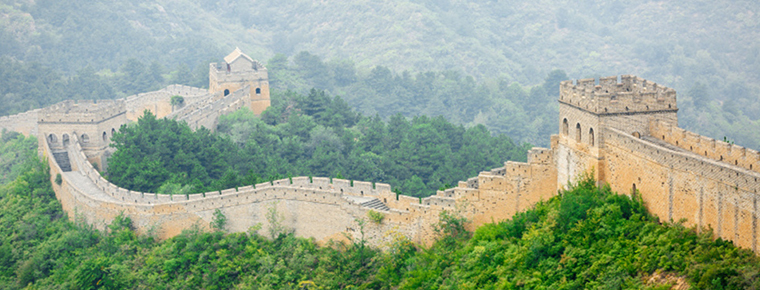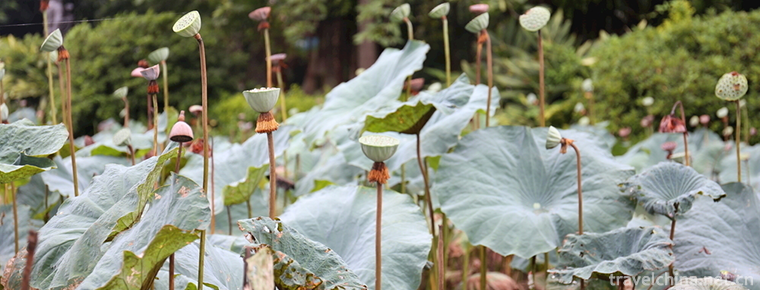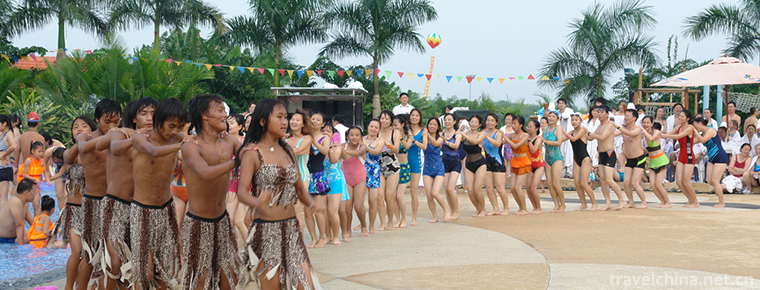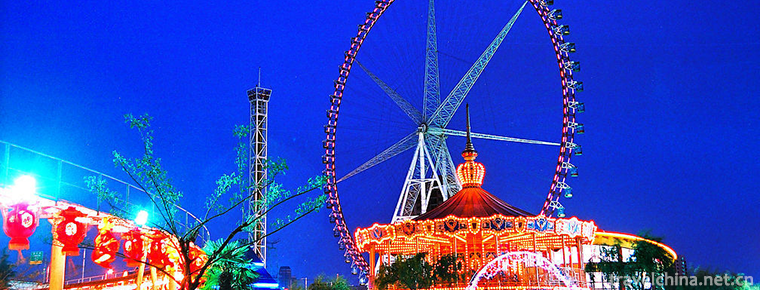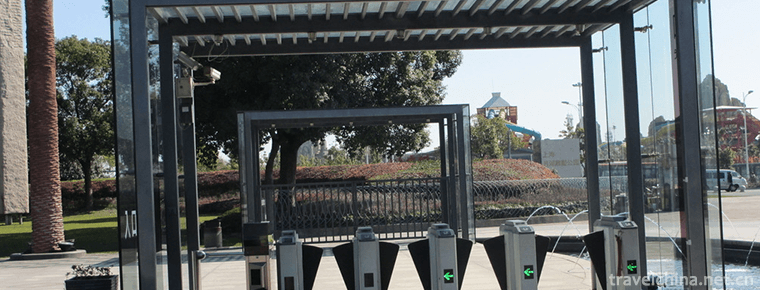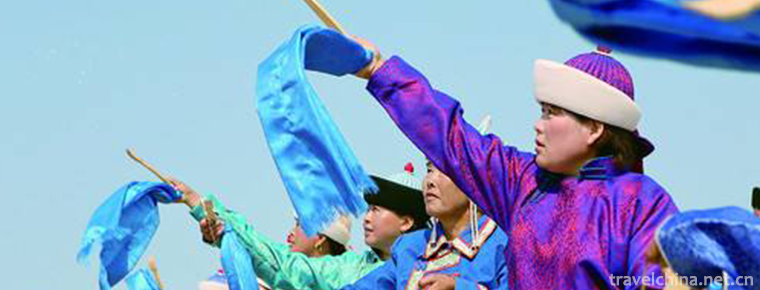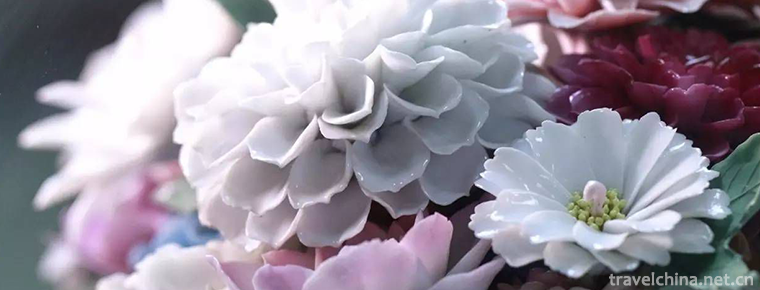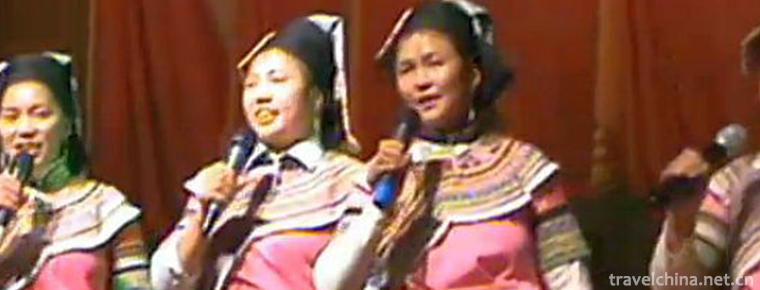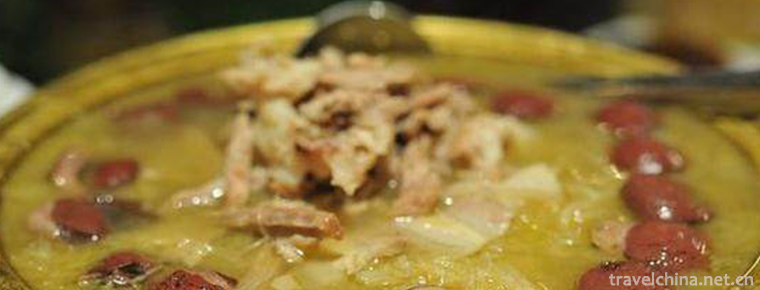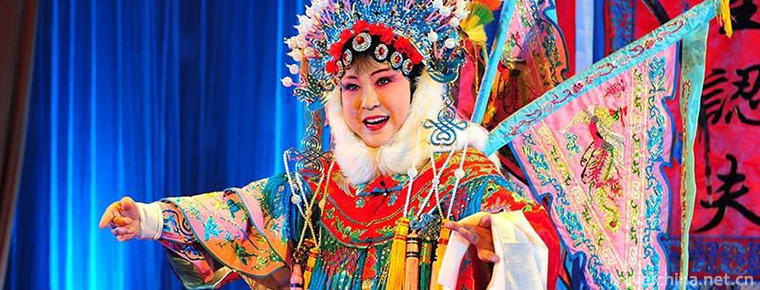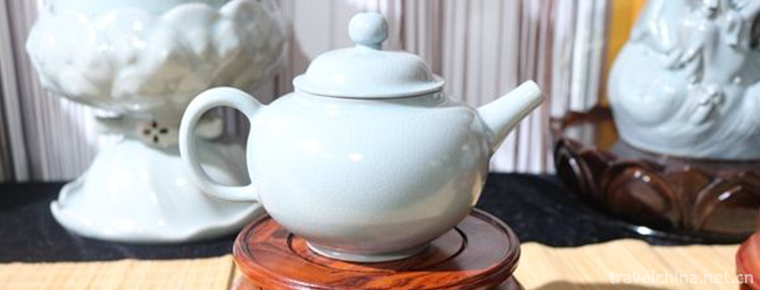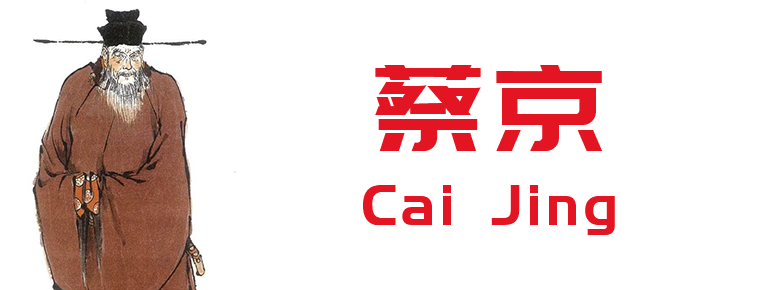Beijing embroidery
Beijing embroidery
Beijing embroidery, also known as palace embroidery, is an ancient Chinese traditional embroidery technology, the general name of embroidery products centered on Beijing. Ming and Qing dynasties began to flourish, mostly used for court decoration and costumes, with exquisite materials, exquisite technology and elegant style. Most of the high-grade folk palace embroidery is closely related to the palace, and it is the crystallization of the wisdom and artistic creativity of the ancient working people. The best embroidery in Beijing embroidery is "Pingjin Dazi" embroidery in needlework. This kind of embroidery is delicate and luxurious, with real gold twisted thread coiled into patterns or seeds on it. Beijing embroidery, as one of the "Eight Excellent Embroideries in Yanjing", was once called "Su, Hunan and Gu" in "Four Famous Embroideries" and "Four Great Embroideries".
On November 11, 2014, Beijing embroidery was approved by the State Council and listed in the fourth batch of national intangible cultural heritage list.
Historical origin
"Jing Embroidery", also known as "Palace Embroidery" or "Palace Embroidery", can be traced back to the Tang Dynasty. According to the records of Qidan, Yanjing at that time was "a group of beautiful embroidery and the best in the world", and "court embroidery" was born because Liao set up embroidery courtyard in Yanjing, mainly for the purpose of worshipping the clothes of the court, the emperor and the marquis. After the Ming Dynasty, the characteristics of needling, skills, employment, materials, patterns and patterns of "court embroidery" became more distinct, and the number of embroidery workers was increasing. By the Qing Dynasty, "palace embroidery" was more prosperous, especially during the Guangxu period, it was well-known at home and abroad, known as "palace embroidery". In the Qing Dynasty, as the influence of "palace embroidery" art continued to expand, the people of Beijing followed suit. At the end of Qing Dynasty, many embroidery workshops emerged in Beijing, inheriting some characteristics and stitching methods of "court embroidery", which made the design more folkloric and closer to life. Later generations are called "Beijing embroidery", and ranked as the first of four small-name embroidery in Qing Dynasty (Beijing embroidery, Lu embroidery, Bian embroidery, Ou embroidery).
Guyizhou, which was built in the 16th year of Kaihuang in Sui Dynasty (596 A.D.), has a history of more than 1400 years. It has beautiful mountains and rivers, outstanding people, and stars and Roches with Yanxia ruins, Zhaoxian Golden Terrace and Bauhingguan Great Wall. The imperial mausoleum of Qing Dynasty has a special favorite "Beijing embroidery" of all dynasties. It is a brilliant pearl on the earth of Yizhou. Beijing embroidery is pure handmade embroidery. It has been handed down and developed for thousands of years. With a low history, the Beijing embroidery series has been launched. This series is a collection of the essence of heaven and earth, and the essence of the sun and moon. On the basis of the original hand-made craft, the process is more exquisite, the process is more complicated, and the integration of history and modernity is of great appreciation and collection value. Beijing embroidery is characterized by bright color matching of embroidery thread, and its color is similar to that of pastel and enamel in porcelain. Beijing embroidery is characterized by elegance, refinement, beautiful patterns, flexible needling, exquisite embroidery and vivid image. The material of Beijing embroidery is very exquisite. Its material selection is precious, luxurious and magnificent, regardless of cost. Beijing embroidery is unique in weaving embroidery on silk. In the representative works of Beijing embroidery, the power of emperors, princes and nobles permeates from every thread.
Inheritance significance
As a traditional palace handicraft on the verge of being lost, "Beijing embroidery" is facing the necessity and urgency of protection and development. Beijing embroidery, a traditional handicraft, carries the cultural heritage of the nation and embodies the wisdom of the Chinese children. Now the Palace Museum has preserved a number of embroidery exquisite products, which spare no expense in production and strive to pursue precious luxury. Because of the delicate nature of silk cultural relics, the exhibition is greatly restricted by the environment of temperature, humidity, light, dust and so on, especially the damage of ultraviolet rays to silk products. Therefore, the museum exhibits fewer silk embroidery exhibits and tries to exhibit reproductions. Therefore, in the work of restoring historical scenes of cultural relics, the reproduction of silk products is a very important task. Because in order to reach the original level, it is by no means a simple copying process.
Beijing embroidery has three outstanding points: first, it has a unique position, some patterns are not allowed to be used in other embroidery species, such as the twelve-band pattern on the Dragon Robe and the five-claw Golden Dragon pattern, which can only be used by the emperor (four claws are pythons, misuse is suspected of usurpation). 2. The theme of the design is extensive: landscape, flowers and birds, dragon and Phoenix patterns, birds and animals, auspicious eight treasures, etc. In the use of more moral auspiciousness, there are interesting "colors" everywhere, so-called "intentions must be intentional, patterns must be auspicious". Thirdly, the palace has a strong artistic style, gorgeous decoration and precious materials. Some embroidery pieces are embellished with agate, jadeite and other precious stones. Beijing embroidery is mainly used for opera costumes of Beijing Opera, antique costumes, movies and TV dramas, especially 80% of traditional Beijing Opera costumes have embroidery.
Development and innovation
Originally, Beijing embroidery served the court specially. Some patterns have not adapted to people's aesthetic needs nowadays, such as dragon robes and ministers'supplementary clothes. Nobody will wear them except for collecting them. But after the transformation of the old artists, the ancient art of Beijing embroidery has been regenerated on some modern clothes, such as a red Tang suit, which can be embroidered with gold thread on the open-top clothes with the pattern of "Shou". The word "longevity" is in the center and can be embroidered on both sides. It represents a noble culture of China and hopes that all the things of "longevity" can be integrated into one. "
At the same time, the Beijing Embroidery Workshop has also produced some products that have little to do with embroidery, such as tiger shoes, cushions and so on. The craftsman explained, "Because this is very popular with the market, many friends come to see not only Beijing embroidery. Although it is a small thing, there is also a part of the income bar, mainly in order to adapt to the market. With the launching of the census of intangible cultural heritage resources in Beijing, Beijing embroidery will gradually get the government's attention and attention. People hope that this traditional handicraft with royal style will seek development in inheritance.
In the 19th century, with the flourishing of embroidery commodities, there emerged many local embroidery with unique local characteristics. In addition to the four famous embroidery we are familiar with, there are also Beijing embroidery in the more famous northern areas. Beijing embroidery is based on folk embroidery in the northern region, which is deeply influenced by the artistic style of court embroidery, and forms its own unique style. The pattern is realistic, mostly based on meticulous brushwork. Themes include flowers and fruits, courtyard scenery, drama characters and so on. In common use, various colors of untwisted velvet (broken into several filaments by one silk) are used to show the Yin and Yang surfaces of objects by means of needle wrapping, needle laying and needle splicing. The suede surface is even and thin, the needle feet rise and fall naturally; the pattern is bright and flat, and the color matching is bright, which is similar to the color matching style of the pastel and enamel in the porcelain. Sprinkler embroidery, full embroidery, patchwork, pingjin, tuiwei and pearl-wearing embroidery in Beijing embroidery have long been well-known.
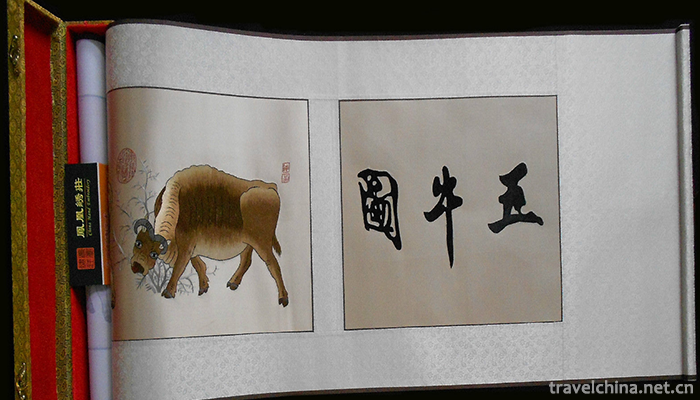
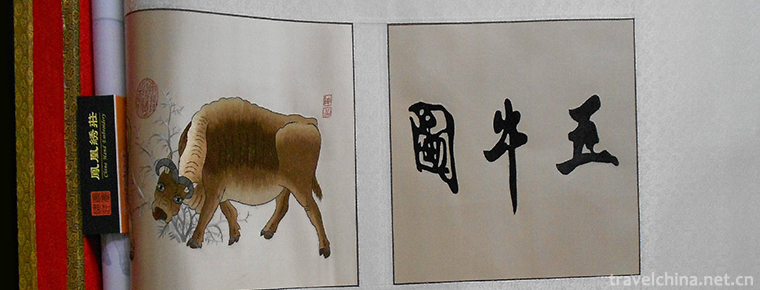
Beijing embroidery
-
Three Water Lotus World
Foshan Sanshui lotus world is the largest lotus scenic spot in the world with the richest variety resources. It integrates architecture, sculpture, Dutch, mobile games, hotels and catering
Views: 185 Time 2018-12-18 -
Jiahe City Hot Spring Valley
Jiahe City Hot Spring Valley is located in Jiahe City, Nanwu Avenue, northeast of Nanning City. It is about 13 kilometers away from Nanning International Convention
Views: 395 Time 2019-01-21 -
Jinjiang Amusement Park
Jinjiang Paradise is the first large-scale modern amusement park in Shanghai, China. It covers an area of 170 Mu and has 40 amusement projects. It is suitable for tourists of all ages. It receives abo
Views: 218 Time 2019-01-29 -
Shanghai Yuehu Sculpture Park
Yuehu Sculpture Park is located in Sheshan National Tourism Resort, Songjiang District, Shanghai. It is built around the lake. It is a sculpture art park which combines natural scenery with modern lan
Views: 121 Time 2019-03-09 -
Bogda Ula Festival
The sacrifice of Bogdahura (Shenshan) is one of the earliest forms of Mongolian creative culture in China. It is the product of national culture, which is formed by historical accumulation and plurali
Views: 104 Time 2019-04-04 -
Firing Techniques of Fengxi Porcelain
Fengxi Porcelain Firing Technology, a local traditional technology in Fengxi District, Chaozhou City, Guangdong Province, is one of the national intangible cultural heritage.
Views: 806 Time 2019-04-29 -
Ha Ni Ha Ba
Ha Ni Ha Ba, an important part of Chinese Hani folk literature. Hani Haba, which means Hani ancient songs, is a popular and far-reaching folk song in Hani social life.
Views: 368 Time 2019-05-02 -
Traditional cooking techniques of Liao cuisine
In April 2016, "Liao cuisine traditional cooking skills" was approved by the State Council as a national intangible cultural heritage, Liao cuisine became the first major cuisine department
Views: 209 Time 2019-05-13 -
Luo Juan Opera
Luojuan opera, commonly known as trumpet opera, is one of the local operas and one of the national intangible cultural heritages spread in Runan County of Henan Province and Dengzhou City of Henan Pro
Views: 170 Time 2019-05-15 -
Firing Techniques of Ru Porcelain
On May 23, 2011, the firing technique of Ru Porcelain was approved by the State Council of the People's Republic of China and listed in the third batch of national intangible cultural heritage, the he
Views: 134 Time 2019-06-11 -
Cai Jing
Cai Jing (February 14, 1047 - August 11, 1126), character length, Northern Song Dynasty Prime Minister , calligrapher, Xinghua Army Xianyou County cixiao Li Chi Ling (Xianyou County, Putian City, Fuji
Views: 223 Time 2019-09-14
